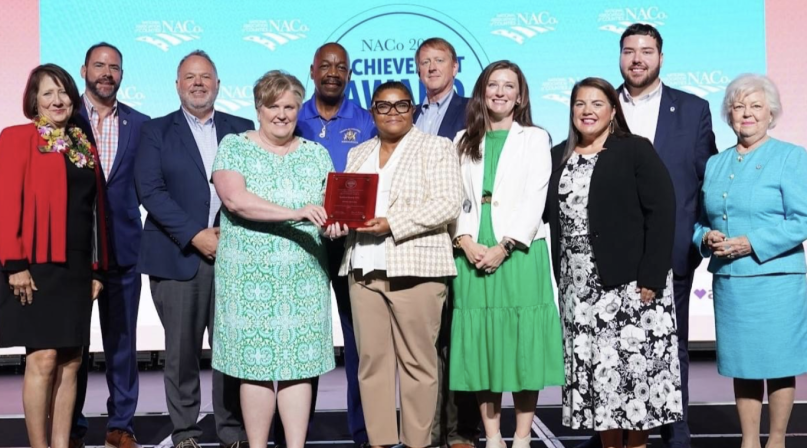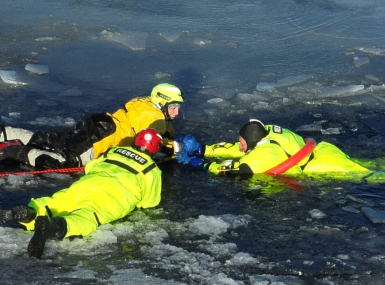North Carolina county decreases 911 non-emergency calls by connecting residents to services they need

Key Takeaways
Overwhelmed with a large volume of non-emergency calls made to fire and emergency medical services, Guilford County, N.C. created an Adult Resource Team of social workers to better serve its most vulnerable communities — particularly its low-income aging population — and free up emergency services to respond to the county’s most urgent situations.
Many residents don’t have a family support system or access to resources such as in-home healthcare or a primary care physician, and they were reaching out to the Fire Department and EMS any time they needed assistance or healthcare. Responding to one emergency call costs Guilford County roughly $1,100, so the county was rapidly spending money on emergency response, while many people were still not getting proper or long-term support. One Guilford County resident dialed 911 6,700 times over a 17-year period.
The county’s Adult Resource Team (ART) is made up of four social workers who work with EMS and Fire partners to make referrals to resources and provide education on when to reach out to emergency response, which is cutting costs at the county level, allowing emergency services personnel to respond to actual medical emergencies and fire suppression and rescue and helping residents meet their basic needs.
“There was a network there, but all the players didn’t know where everybody was or the services they provided,” said Justin Hargett, Guilford County’s EMS manager.
“What we’re really trying to do is find a ‘No Wrong Door’ approach for people in our community, so that no matter which entry pathway they take into the system, somebody’s there to help them, and the ART team is navigating them through their needs and through their care,” he said.
Previously, referrals could only be made through Adult Protective Services, which has an extensive form process, and not every adult who needs some kind of help needs Adult Protective Services, Hargett said. Now, when paramedics are called to a scene, they can provide a quick referral through submitting a patient’s information into a Google form, which is immediately sent to the Adult Resource Team, and a social worker will follow up with them to assess the type of support they need and make the necessary connections.
“Even if it’s not somebody that’s called a bunch and it’s just something [EMS] sees, like they might need help in their home, or they might need a nurse to come in once a week to help with their medications, we can get that referral,” Hargett said. “And now, our social services team can take care of community members who they never knew needed help or didn’t know how to access it.”
The Adult Resource Team partners with local organizations that provide in-home aid services, home healthcare services and mental health services to connect their clients to resources. If someone needs handicap equipment, for example, the team will connect them with someone in its network who can provide that, according to Scott O’Connor, Guilford County EMS’ shift commander.
“If they’re short on meals, we would make sure they have what they need to get food, look at guardianship for a patient, look at Meals on Wheels for the patient, and see what the patient needs,” O’Connor said. “We can look and see what kind of safety hazards are in the house, falls on rugs, making sure they have handicap accessories.
“We can reach out to the community and say, ‘We have an 85-year-old female who is living alone, and she needs some grab bars in the bathroom,’” he said.
Social workers also work with the hospital system to ensure patients have the equipment they need in their homes upon release, because, before the established collaboration of the Adult Resource Team, “a lot of times, the patient was discharged by ambulance home, but there wasn’t a hospital bed, or there wasn’t a potty chair,” O’Connor added.
Once someone receives a referral through the Adult Resource Team, a social worker continues to check in for around six months — sometimes shorter, sometimes longer depending on the situation — to ensure a client doesn’t fall through the cracks, according to Cheri Stinson, the Adult Resource Team supervisor.
In its pilot phase, the Adult Resource Team worked with 27 adults who were regular contributors to the county’s high volume of 911 calls. In the 30 days prior to the pilot, the clients called EMS or the Fire Department 440 times. In the 30 days following case work, the same clients only called 911 4 times, resulting in a 99.1% decrease. The county is projecting about a 5% reduction in its overall 911 call volume in this year alone, according to Hargett.
“We know as this program grows, that number is also going to grow,” Hargett said. “So, ART is helping to take off a large portion of our volume, and then most EMS systems, you see 3-5% growth in call volume per year, so they’re essentially flattening our call volume growth out for this upcoming expected year.”
The county dedicated $352,000 for staff, training and program development for the Adult Resource Team and the expected annual cost savings is $4.5 million, according to Hargett.
“In addition to the benefits to our public safety, and being able to put ambulances on calls that they need to be on or fire trucks when that true emergency happens, it has a lasting community impact that we don’t see necessarily,” Hargett said. “Because there are people who are getting taken care of in multiple ways now that they never have, and it’s improving the quality of life of our community.”
Related News

County Countdown – Dec. 15, 2025
Every other week, NACo's County Countdown reviews top federal policy advocacy items with an eye towards counties and the intergovernmental partnership.
Stretching small opioid settlement allocations helps funding do more
States and localities are set to receive $56 billion in opioid settlement dollars over an 18-year period, but not every county that receives settlement funding will get enough to build out infrastructure.

County officials moonlight in search and rescue roles
For some county officials, participating in search and rescue operations is another way to serve their communities, and make it safer for people to enjoy natural recreation resources.
County News
211 keeps county residents connected to social services

